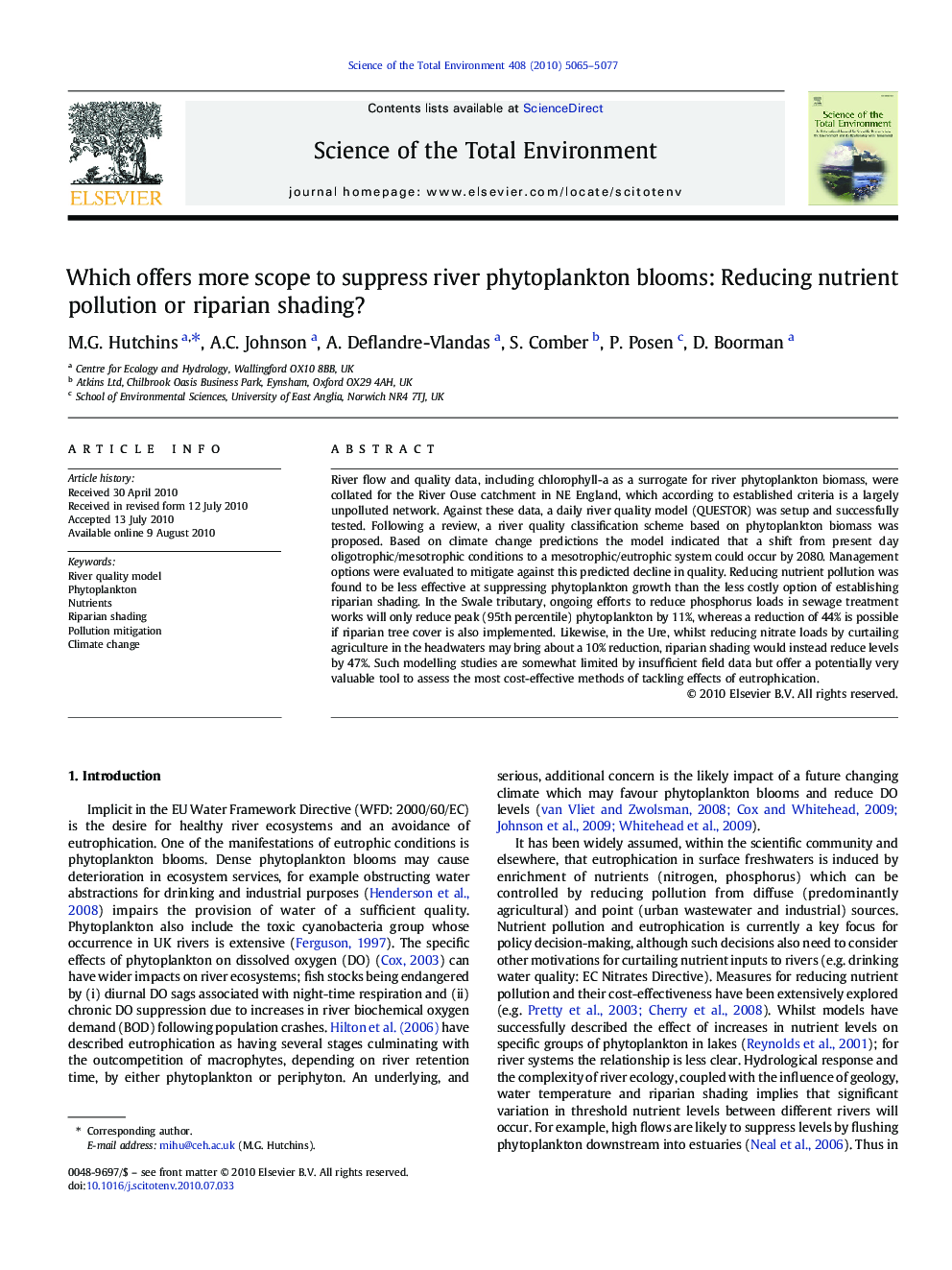| Article ID | Journal | Published Year | Pages | File Type |
|---|---|---|---|---|
| 4430736 | Science of The Total Environment | 2010 | 13 Pages |
River flow and quality data, including chlorophyll-a as a surrogate for river phytoplankton biomass, were collated for the River Ouse catchment in NE England, which according to established criteria is a largely unpolluted network. Against these data, a daily river quality model (QUESTOR) was setup and successfully tested. Following a review, a river quality classification scheme based on phytoplankton biomass was proposed. Based on climate change predictions the model indicated that a shift from present day oligotrophic/mesotrophic conditions to a mesotrophic/eutrophic system could occur by 2080. Management options were evaluated to mitigate against this predicted decline in quality. Reducing nutrient pollution was found to be less effective at suppressing phytoplankton growth than the less costly option of establishing riparian shading. In the Swale tributary, ongoing efforts to reduce phosphorus loads in sewage treatment works will only reduce peak (95th percentile) phytoplankton by 11%, whereas a reduction of 44% is possible if riparian tree cover is also implemented. Likewise, in the Ure, whilst reducing nitrate loads by curtailing agriculture in the headwaters may bring about a 10% reduction, riparian shading would instead reduce levels by 47%. Such modelling studies are somewhat limited by insufficient field data but offer a potentially very valuable tool to assess the most cost-effective methods of tackling effects of eutrophication.
